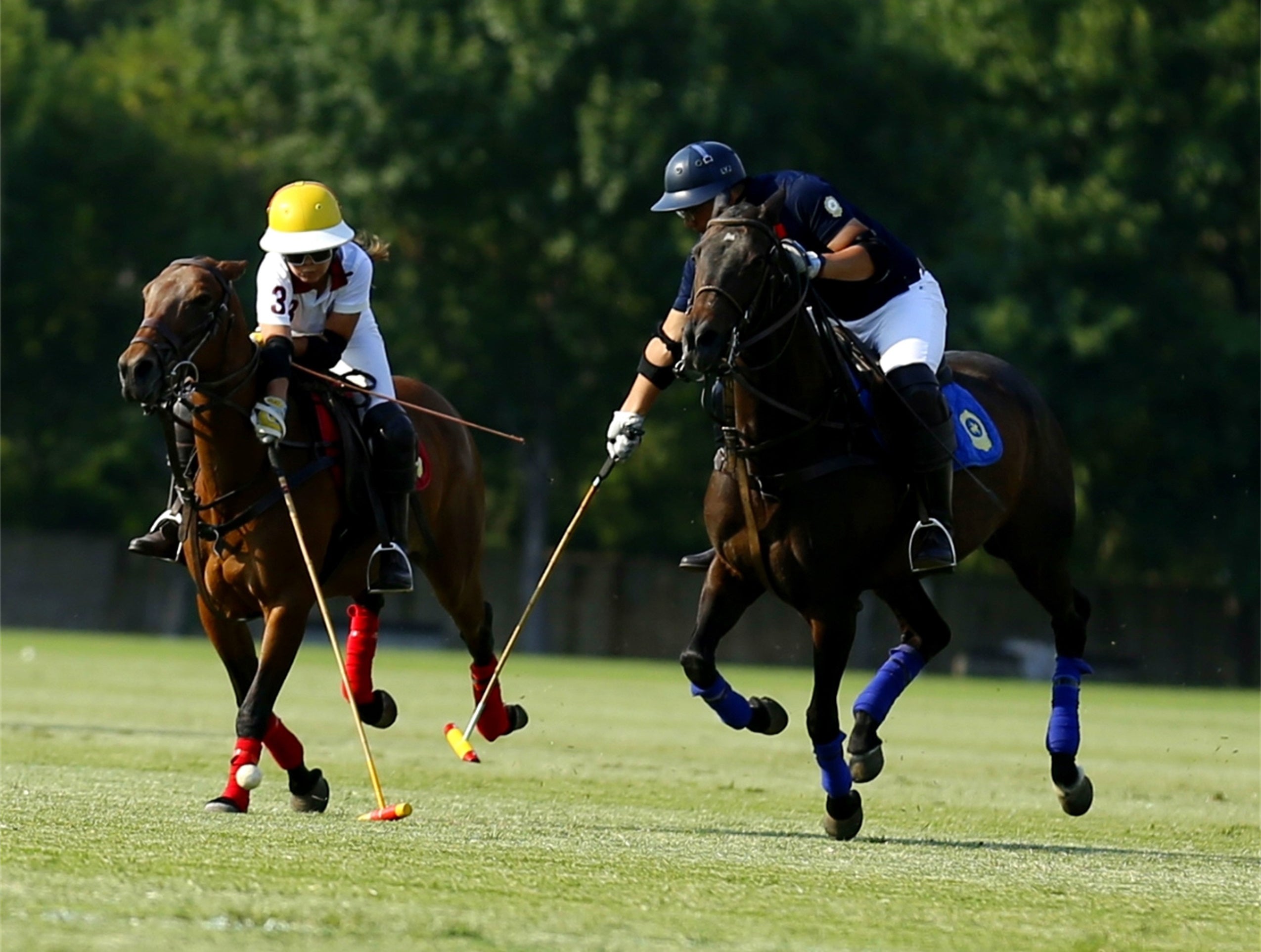In polo position
THE ARTICLES ON THESE PAGES ARE PRODUCED BY CHINA DAILY, WHICH TAKES SOLE RESPONSIBILITY FOR THE CONTENTS

As a child, Guan Haoyun enjoyed riding horses with her grandfather on the vast plains of Northwest China’s Xinjiang Uygur autonomous region.
So when she returned from her studies overseas in 2020, Guan, now 22, searched for opportunities to get back in the saddle.
“I went online and discovered you could play polo here,” she says. “I never tried it before but it involved horses, so I thought, ‘why not?’”
In fewer than three years, Guan has become one of the budding players of a sport set to take the equestrian stage by storm, at home and abroad.
Polo is a high-end team sport, requiring significant investments on the horses, training, equipment and facilities. In China, paintings, murals, figurines and other images of “the sport of kings” can be traced as far back as the Tang Dynasty (618-907), with both male and female aristocrats depicted chasing the ball on horseback.
Guan trains and competes at the Tianjin Goldin Metropolitan Polo Club, where there are more than 100 horses catering to more than 70 players, making the club a leader of the niche sport in the country.
“Polo is very demanding, physically, mentally, in all aspects, for players and horses alike,” the club’s head coach Cesar Hugo Palacios says.
“We require the best of horses. They need the intelligence, agility, speed and stamina for the sprints and turns, as well as the ability to be calm and focused, in sync with the players,” says Palacios, who is from polo powerhouse Argentina.
The 44-year-old, who has competed worldwide and coached players in China for a decade, says promising, motivated Chinese trainees like Guan will help spur the sport in the country for it to reach top international levels, possibly within the decade.
“The passion for polo is necessary. Knowing the horses and caring for them are essential,” he says. “But a comprehensive support network and cultural mindset, including professional staff, related industry and institutions, are also needed.”
The club signed a cooperation agreement with the vocational and technical college of Inner Mongolia Agricultural University in June, involving a joint training base aimed at cultivating talent and professionals in the equestrian and related sectors.
Wu Gangfang, head of the China Horse Culture, Sports and Tourism Institute, which is affiliated to the art development centre of the Ministry of Culture and Tourism, says a new national equestrian education, tourism research and mutual learning cooperation alliance will also “help link the riding clubs of major cities with the magnificent space of equestrian study tours and horseback riding tourism in the ethnic areas of the north and northwestern regions, and open up training, technical safety standards and education on both sides”.
“This will help equestrian enthusiasts around the world enjoy the best services from our riding clubs and tourism providers and ensure that they meet international standards and certifications,” he says.
“We aim to get more people on horseback and loving equestrian sports, for young and old to enjoy the cool of summer and warmth of winter with the horses, and to experience the joy of riding, professionally and recreationally, all year round.”
At the Tianjin polo season opening match in mid-June, Guan Haoyun was part of the winning team that included coach Palacios. The weekend tournament on the manicured lawn of their home club under clear blue skies drew nearly 3,000 spectators online and offline.
“I like being part of a team, facing the competition together,” says Guan. “Polo is exciting, intense and spontaneous – even for audiences, when they are up close to the galloping horses, it’s exhilarating,” she says.
“I hope more people get to try it. For those who are wondering what it’s like, I’d also encourage them to just get up on the horse and go for it.”
Subscribe to Independent Premium to bookmark this article
Want to bookmark your favourite articles and stories to read or reference later? Start your Independent Premium subscription today.